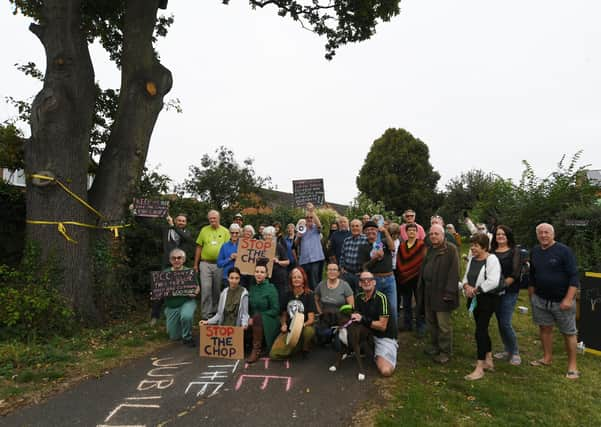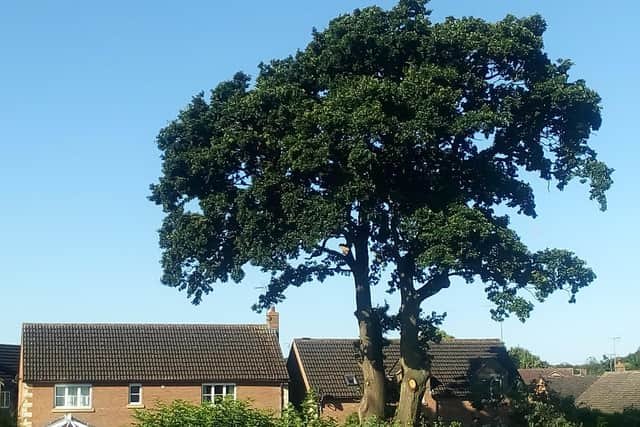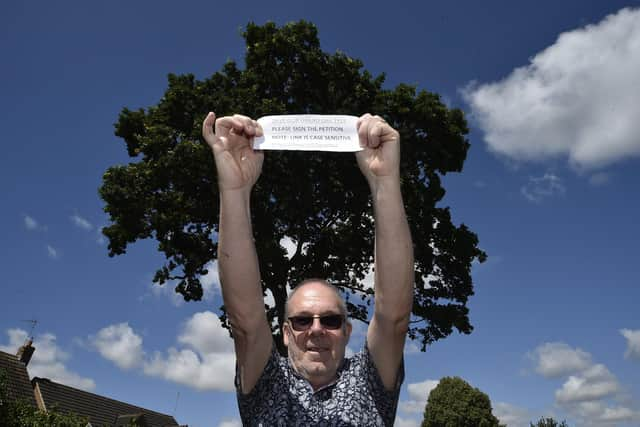Campaigners seeking to save ‘ancient’ oak tree in Peterborough claim its removal could worsen homeowner’s problems as issue set to be debated by council


Campaigners have been emboldened in their quest to save what is thought to be a 600-year-old oak tree in Bretton from being felled by Peterborough City Council by an independent arboriculture report.
The report, commissioned by members of the Trees of Peterborough Facebook group, suggests that the problems raised by a homeowner in Barnard Way, that the tree is causing subsidence to their property, are in fact more likely to have been caused by a geological process called heave.
Advertisement
Hide AdAdvertisement
Hide AdIn all of its decision-making so far, the council has sided with the claims of PRI Insurance Services that the tree is the cause of subsidence at the property and has obtained permission to fell the tree, which is valid until July 2022.


Ground heave is the upwards movement of ground, due to the expansion of clay soils when wet.
The report, authored by Jonathan Harpham from Ethical Arboriculture, states: “I have reviewed the evidence from level monitoring and have an understanding of the figures presented.
“The level monitoring clearly indicates a positive figure across all 16 points. A positive figure usually indicates heave rather than subsidence; as clay soil rehydrates it expands.
Advertisement
Hide AdAdvertisement
Hide Ad“By plotting the dates with the highest increase in height against the rainfall obtained from the Cambridge NIAB weather station via the met office website, it would appear that these changes are in line with rehydration from rainfall in both the month prior and during the month of the level monitoring visit.


“While there are differences in height increases from the front of the property to the rear, the rear being where there are the largest changes in height, these are greater on the conservatory than the actual house. This would be in line with the difference in loadings between foundations, the house foundation bearing more weight and being more substantial, rather than a difference in volume change potential.
“With the points raised above, I struggle to see the justification behind the removal of the protected tree and believe that before any decision is made further investigation into whether this is a case of subsidence or heave, as removal of the tree would result in further issues if heave were found to be the cause, should be carried out by an independent structural engineer.”
The report also questions the legality of the property’s conservatory under planning laws, but the council is yet to comment on this.
Advertisement
Hide AdAdvertisement
Hide AdCampaigner Richard Elmer said: “PCC’s proposed solution is to fell the ancient tree. This would be fairly likely to make the problem worse as the tree would not be removing water and it is fair to assume that the soil would become more saturated and cause the heave problem to become larger. So it seems, were this not to be, it could cause the homeowner more problems.
“If they really do want to help the homeowner, they would be better off spending the money on clearing the drainage ditch to the rear of the house, thereby reducing the soil saturation on the homeowners property, although I understand that the council are not duty bound to do this.”
At Wednesday’s (December 8), full council meeting, the issue of the tree will be discussed after an online petition passed the threshold of 500 signatures. It achieved just less than 700 signatures by the time it officially closed at the end of last month.
As part of the process, the council has the right to respond to the petitioner in full and have this presented to full council. The document, produced by the council’s Head of Sustainable Growth Strategy, Richard Kay, restates the council’s case that the application to fell the tree is indeed valid and challenges the claim of campaigners that the tree itself is over 600 years old, dating back to the Grimshaw Woods in the 14th century; suggesting a truer age is more likely to be around 300-years-old, meaning is should not be classed as ‘ancient.’
Advertisement
Hide AdAdvertisement
Hide AdThe report also states that should the council vote to retain the tree and accept all future liability for damage causes, this could extend to five further houses over the tree’s life, costing as much as £200,000 per property.
The five options considered by the report are as follows:
Retain the tree- The council accepts liability for all future damage caused. The cost of underpinning could prove to be £200,000 each for the five homes.
Prune the tree- At a cost of around £1000 every two years.
Fell the tree- £2000 to fell, between £3000 and £5000 for security measures and £4,980 for replacement trees.
Construct root barriers- Would be required in at least two private gardens. Would cost in the region of £30-£40,000 plus future liability costs. Cost is “potentially the highest of all options” and deemed to have a “high risk of failure.”
Advertisement
Hide AdAdvertisement
Hide AdDo nothing- Not considered. PCC is responsible for the tree and any damage it causes.
The meeting will be streamed live on the council’s Youtube account from 6pm.
RELATED:
Advertisement
Hide AdAdvertisement
Hide AdComment Guidelines
National World encourages reader discussion on our stories. User feedback, insights and back-and-forth exchanges add a rich layer of context to reporting. Please review our Community Guidelines before commenting.